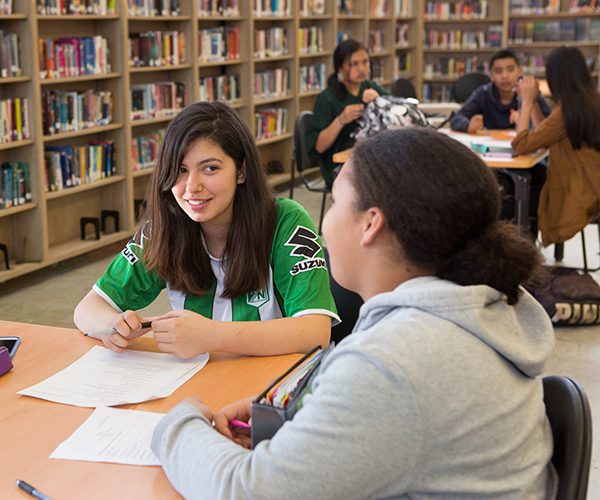
ESSER dollars, or pandemic relief funds for schools, are running out at the end of September, and educators and policy leaders see a stark fiscal cliff ahead. District leaders need a funding pathway to sustain their most effective interventions. One of those things is something I know a little about: high-dosage (or better stated, high-impact) tutoring. In 2004, I was one of the two folks who co-designed the first ever in-school-day, high-dosage tutoring intervention in a U.S. public school, in Boston, with Mike Goldstein. We coined the phrase “high-dosage tutoring.”
Getting a high-impact tutoring program at scale in districts is hard work. There are three big challenges: people, time, and money. While there are reasonable solutions to account for the labor issue, and to finding enough time, the $64,000 question now is funding.
Here’s the big picture: the average U.S. public school district spends about $15,000 a year per pupil. The range is huge: some Southern and West Coast districts spend under $10,000 per student, while some Northeast and mid-Atlantic districts spend $30,000 per student. Let’s use the $15,000 figure for argument’s sake here.
Having designed and run tutoring interventions across the country for 20 years, and having helped states and districts to do it right by following an evidence-based framework, it’s clear to me that the cost to a district of running a high impact program will run under $1,000 per pupil per year. That’s the high end — if kids receive tutoring for half the school year, the cost per pupil will drop to $500-$800 per pupil.
But that’s still a big cost when federal aid is ending. In the event that tutoring can’t be continued for all students who need it, my proposition is that tutoring should focus on two strategic points in the P-12 trajectory: get kids to be proficient readers by the end of third grade (including support for some second graders), and get kids to pass Algebra 1 by the end of ninth grade or at the end of eighth. Neither case is too late to help struggling students — there’s a ton of strong randomized controlled trial evidence of the effectiveness of reading interventions in the lower grades and math interventions in the higher grades. And if we can help students be proficient in reading by the end of third grade, four times as many kids will graduate from high school nine years later. If we help kids to pass Algebra 1, four times as many students will graduate three years later. So these are the key years.
In addition to doing right by supporting students who need extra help to achieve academic success, there is an economic incentive for districts to support students at these touchpoints.
Districts that spend $15,000 per pupil spend $200,000 per pupil over the P-12 journey. Investing $500-$1,000 at each of the two key touchstones is a pretty good investment to provide insurance that fewer will drop out.
Losing a student to dropout, while principally an educational tragedy, is also a fiscal calamity, as $45,000 in future state and federal funds will be lost when that student is no longer enrolled after ninth grade, a loss magnitude larger than the cost of tutoring.
As budgets remain tight, we hope that states will generate new budget line items to sustain the most effective models of high impact tutoring and that states will also look to use their “set-aside” provisions to reserve 3% of federal Title I funds for high-impact tutoring. But district leaders can also look to new ways to fund tutoring to replace depleted ESSER streams: AmeriCorps and federal work-study. AmeriCorps state commissions are looking to fund strong proposals for tutoring. Districts can become AmeriCorps partners by securing grants from their state commissions; these grants are three years long and will pay for the cost of the labor needed to deliver tutoring.
In addition, if districts look to hire college undergraduate tutors, they should look to hire some of the 600,000 students a year who are receiving financial aid and, as part of their college aid package, have a federal work-study grant. In January 2024, the White House issued guidance to colleges and universities suggesting they should spend 15% of their federal work-study funds on community jobs, including and especially designating tutoring jobs as eligible. Undergrads can make terrific tutors; we started using this labor force in 2002 with great success. George Washington University is using college undergrads and providing the work-study subsidy now; so is Grand Valley State University in Michigan. (More info here.)
The fiscal cliff is coming, and districts may have to scale back on programs that have been helpful to students, but there are ways to mitigate its impact on the most underserved students. Education leaders just need the will, and follow the pathways, to do so.
Alan Safran is the CEO and co-founder of Saga Education, which helps states and districts with tutoring best practices.
-------------------------
By: Redante Asuncion-Reed
Title: Why Districts Should Focus on High-Impact Tutoring Interventions as ESSER Funding Ends
Sourced From: edtrust.org/the-equity-line/why-districts-should-focus-on-high-impact-tutoring/
Published Date: Wed, 15 May 2024 12:55:26 +0000
Read More
Did you miss our previous article...
https://prohealthsciences.com/pandemic-news/chicagos-12-best-things-to-do
 General Health and WellnessFitness and ExerciseSupplements and VitaminsPandemic NewsVideosPrivacy PolicyTerms And Conditions
General Health and WellnessFitness and ExerciseSupplements and VitaminsPandemic NewsVideosPrivacy PolicyTerms And Conditions
